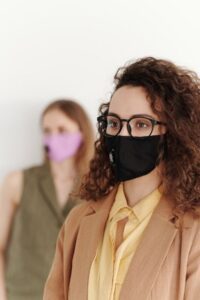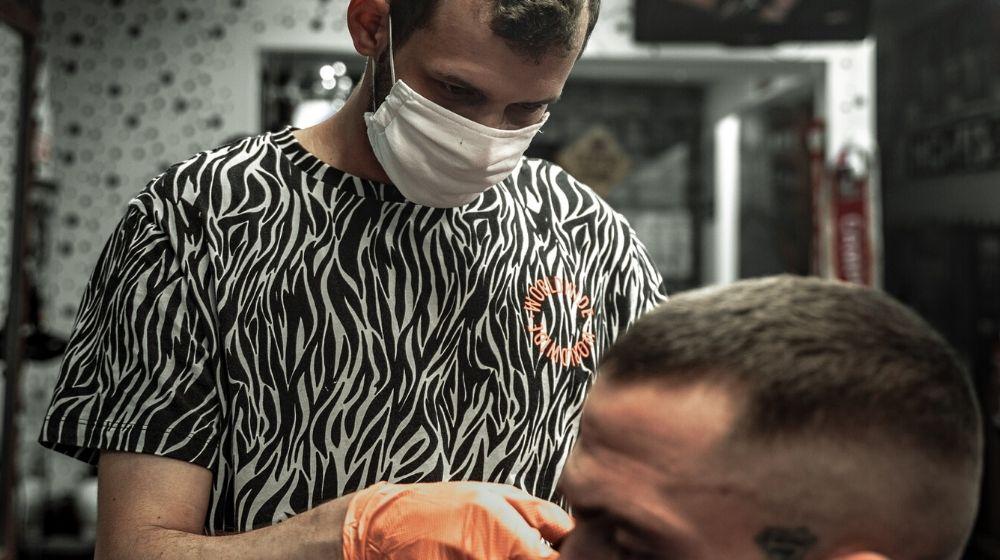As we enter a new phase of the COVID-19 pandemic, employers need to keep up with the Occupational Health and Safety (OHS) changes to the requirements for workplace health and safety.
If you have staff returning to the workplace, they need to understand their rights and responsibilities.
Social distancing and cleaning requirements are just two of the measures that have been introduced to keep workers, visitors and anyone else who enters your workplace safe.
Workplace health and safety includes mental health too
For some, returning to the workplace could cause increased stress and anxiety, and the pandemic may have had a deep impact on their mental health, or worsened pre-existing mental health conditions.
Putting support systems and processes in place to check in on the mental health and well-being of staff (including those still working from home) will help their feelings of connection and trust in the organisation (read more on this later).
Related: Increasing employee engagement in times of stress
How to prep your workplace for a return to business
Australians are understandably eager to get back to work, but we can’t just pick up where we left off. Until there’s a vaccine, all employers will need to meet special workplace health and safety requirements. Here’s how to comply:
- Gauge your level of risk.
- Alter your workspace.
- Educate your onsite employees.
Read on for details on how to get your workplace ready for employees, suppliers and customers or clients.
What role do businesses play in reducing the spread of COVID-19?
While Australia has successfully reduced the pandemic curve so far, it’s important to keep following the workplace health and safety guidelines.
This means allowing employees to work from home whenever possible.

For staff who need to travel for work, if it’s achievable, you should allow them to do so at off-peak times. Consider working in shifts to limit the number of people on site at any one time, with cleaning in between if possible.
Before returning to the workplace, employers may need to consider changing how they work, and introduce measures such as:
- Arranging the workplace to provide traffic flow in one direction
- Continue holding virtual meetings when possible
- Implementing break shifts that allow for cleaning
- Introducing new cleaning routines
You’ll also want to make sure hand sanitiser, gloves, masks, soap and paper towels are on hand and conveniently located.
Step 1: Gauge your level of risk
Before you throw open your doors to employees or customers, you should do a risk assessment.
This is where you identify and understand the health and safety risks associated with each role.
You’ll need to discuss with your employees how they go about their work so you can pinpoint the tasks that might make them vulnerable to infection. Safe Work Australia describes risk assessment as a four-step process:
- Identify hazards
- Assess risks
- Control risks
- Review control measures
You’ll likely need to spend the most time on step No. 3, as it requires changing/enhancing your workplace. But once the assessment is complete, you’ll be in a much better place as far as minimising the risk.
These changes to your workplace will probably not be short-lived, as we don’t know when the pandemic will end. It’s likely to be a long time before we see COVID-19 under complete control.
Businesses at greatest risk are in these sectors
We’re all aware of how the health industry is on the front line in dealing with the pandemic. While they’re at the greatest risk, there are other industries which have elevated risks too.
Because of the way they operate and who they serve, these businesses naturally have higher risks of infection. These include:
- Aviation services
- Drug, alcohol and other related services
- Aged care facilities
- Outpatient services
- Pharmacies
- Funeral directors
- Disability support providers
- Health services and therapies
Each industry has its own special workplace health and safety guidelines to follow, so you’ll need to ensure you’re up-to-date with your industry’s specifications.
Step 2: Alter your workspace

If workers and clients/customers must return to the workplace, you’ll need to advise everyone who comes into your facility that your practices have changed to suit the current situation.
This includes:
- Ensuring 1.5 metres of space between each person, in accordance with the physical distancing requirements
- Encouraging frequent and thorough hand washing or the use of hand sanitiser when washing isn’t practical
- Reminding everyone to stay home if they are unwell
- Educating them about what the COVID-19 symptoms are and what actions to take if they feel unwell
Using public education posters can help to remind workers and others of the ongoing risk of COVID-19, and what they can do to support a safe workplace. You can also find free downloadable posters through the U.N. here.
Step 3: Educate your onsite employees
Placing posters around the workplace, which state the risks of COVID-19 and how to practice good hygiene, will help to remind employees of their responsibilities.
Hold online or small group meetings to reinforce the message that you don’t want any ill employees showing up at work.

Providing an environment where open communication is welcomed is the best way to reach all employees. Getting managers to chat with their teams and ask how each member is coping shows that you care about your workers. It also allows managers to reinforce the health and safety requirements while checking that everyone understands them. Make sure you communicate their OHS obligations simply and clearly to avoid any confusion or misinterpretation.
Don’t forget to keep your customers informed of any changes to the workplace you’re making to support their health and safety, such as:
- Altered opening hours
- New cleaning measures
- Contact-free service options
This will help reassure them that your business is safe to return to.
The mental health impact of a pandemic
Everyone is seeing the pandemic through the filter of their own set of experiences, values and beliefs. This means the impact on each life differs greatly. It’s vital to show respect and care for your employees’ thoughts and feelings.
A worker with anxiety or depression may now find it even harder to be productive, and may make mistakes due to their mental state.
These mistakes may be harmful to themselves and others, or costly for the business. It’s your role to reassure employees that seeking help is the best action to take. Providing resources for them will empower them to find the guidance they need.
Heads Up is an organisation dedicated to delivering workplace mental health resources. Their Getting Started Pack includes email templates you can send to employees and managers, plus a host of other useful information. It’s ideal for business owners or managers who are new to understanding mental health problems.

While you can’t guarantee that your employees won’t get sick, you can reassure them that you’re doing everything you can to keep them safe.
Do your part for workplace health and safety
As we get back to a new normal in work and business, every workplace needs to follow the health and safety guidelines so we can keep the rate of infection down. While it’s difficult to manage a business during this time, workplaces have an obligation to ensure the safety of their workers, customers and the wider community.
Remember, allow workers to work from home where possible, educate the employees returning to the work site about their responsibilities and show you care about your team by supporting their mental health.
Over to you.





